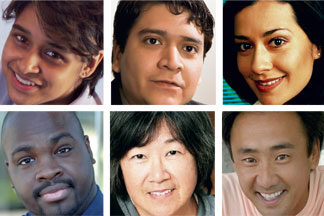 According to the U.S. Commerce Dept., the number of minority-owned businesses in America increased by 46 percent between 2002 and 2007, the most recent years for which data is available. During this time, Asian-owned firms grew 41 percent, Hispanic-owned enterprises increased 44 percent and black-owned businesses grew 61 percent. This growing market is an opportunity for insurance producers.
According to the U.S. Commerce Dept., the number of minority-owned businesses in America increased by 46 percent between 2002 and 2007, the most recent years for which data is available. During this time, Asian-owned firms grew 41 percent, Hispanic-owned enterprises increased 44 percent and black-owned businesses grew 61 percent. This growing market is an opportunity for insurance producers.
Firms with 99 or fewer employees account for 98 percent of all companies with employees, and 89 percent of U.S. businesses are family-owned. They need insurance to provide business continuity and continued income for their families in case of their death or incapacity.
Building relationships with minority business owners is totally different from with Caucasian clients. The first thing to realize is that to relate to multicultural clients you must treat them with sensitivity to their culture. They're usually happy to work with any agent, regardless of what culture you're from, but you'll have to learn a bit about their language, food, beliefs and other practices.
Recommended For You
Want to continue reading?
Become a Free PropertyCasualty360 Digital Reader
Your access to unlimited PropertyCasualty360 content isn’t changing.
Once you are an ALM digital member, you’ll receive:
- Breaking insurance news and analysis, on-site and via our newsletters and custom alerts
- Weekly Insurance Speak podcast featuring exclusive interviews with industry leaders
- Educational webcasts, white papers, and ebooks from industry thought leaders
- Critical converage of the employee benefits and financial advisory markets on our other ALM sites, BenefitsPRO and ThinkAdvisor
Already have an account? Sign In Now
© Touchpoint Markets, All Rights Reserved. Request academic re-use from www.copyright.com. All other uses, submit a request to [email protected]. For more inforrmation visit Asset & Logo Licensing.







